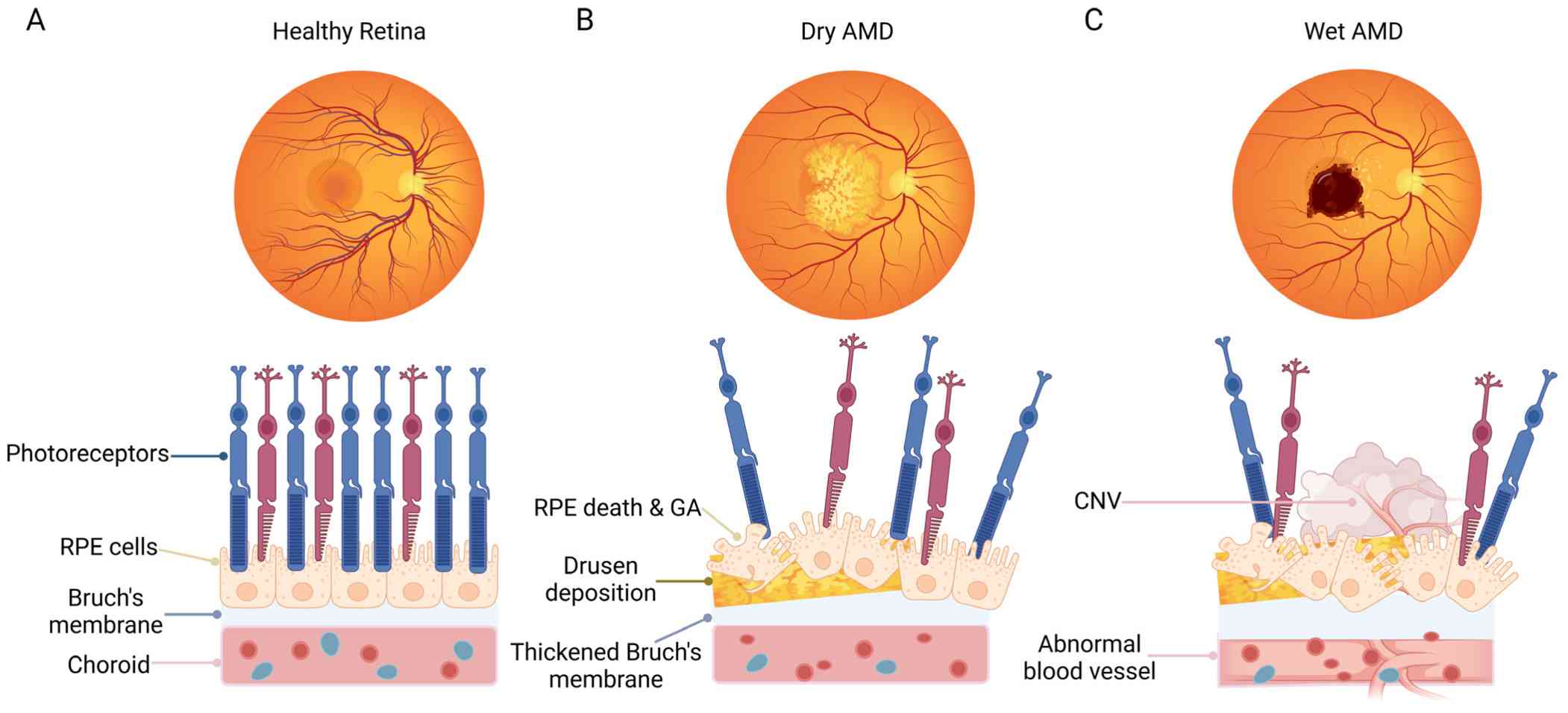Disease sample shortages or unsuitable research materials have historically hindered human disease-associated research, which has been improved significantly with the introduction of human iPSC and iPSC derivates. With decades of expertise in this field, Creative Biolabs creates promising iPSC-derived cell models to help identify difficult illnesses like age-related macular degeneration and has produced various trustworthy models to mimic the disease development.
Age-related macular degeneration, also known as macular degeneration, is an eye disease leading to blur central vision. It influences ~0.2 billion people globally as of 2020. Age-related macular degeneration occurs more in older people, the pathogenesis is the macula damage of the retina and retinal pigmented epithelium degeneration. In the late stage of age-related macular degeneration, it can further be separated into two forms called wet form and dry form. The former undergoes blood or fluid leakage in the retina because of blood vessel growth under the macula. The latter is caused by drusen accumulation-induced light-sensitive cell damage and has a 90% portion of age-related macular degeneration cases. Disease-associated genetic variations and smoking play a role in disease development and there are no treatments to restore the already lost vision.
 Fig.1 Differences between healthy retina and two forms of age-related macular degeneration.1
Fig.1 Differences between healthy retina and two forms of age-related macular degeneration.1
Retinal pigmented epithelium cells form a tight connection between photoreceptors and choroid. Creative Biolabs generates different kinds of cell models for age-related macular degeneration research such as iPSC-derived retinal pigmented epithelium cells. They can recapitulate the primary retinal pigmented epithelium cell characteristics like polygonal morphology with pigmentation. They exhibit high expression of marker genes PMEL17 and ZO-1 and keep the ability of growth factor secretion and phagocytosis. Thus, they are an ideal tool for age-related macular degeneration research.
Our trustable CRISPR gene editing technology can introduce expected mutations into iPSC and advance your research about gene function in age-related macular degeneration development and drug discovery.
To help you with your study, Creative Biolabs offers a variety of assays to identify cell events linked to age-related macular degeneration when combined with our exceptional iPSC-derived cell models. These assays include
In addition to the assays listed above, Creative Biolabs also provides tailored assays to satisfy your needs for studying age-related macular degeneration discoveries. Please feel free to contact us with any inquiries you may have a concern or to discuss your ideas in more detail about age-related macular degeneration.
Reference
For Research Use Only. Not For Clinical Use.